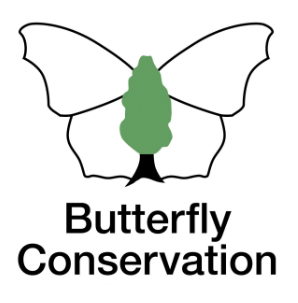Brown Argus
Brown Hairstreak
Chalkhill Blue
Clouded Yellow
Comma
Common Blue
Dark Green Fritillary
Dingy Skipper
Essex Skipper
Gatekeeper
Green Hairstreak
Green-veined White
Grizzled Skipper
Holly Blue
Large Skipper
Large White
Marbled White
Meadow Brown
Orange-tip
Painted Lady
Peacock
Purple Emperor
Purple Hairstreak
Red Admiral
Ringlet
Silver-washed Fritillary
Small Blue
Small Copper
Small Heath
Small Skipper
Small Tortoiseshell
Small White
Speckled Wood
Wall
White Admiral
White-letter Hairstreak
Extinct/rare immigrants
Brimstone
Gonepteryx rhamni
General Distribution and Status
It can be found south of the line between Cheshire and Lincolnshire although the occasional vagrant may occur further north as far as Scotland. As far as its range and abundance are concerned it is probably the most stable of all our butterflies in Britain during the last century or so in spite of habitat destruction due to farming intensification. Being a strong flier, it can travel long distances to colonise new sites if existing breeding grounds are no longer suitable. In Hertfordshire and Middlesex, changes in the butterfly's distribution and abundance are usually quite small year by year although populations fluctuate more widely at each locality.
| United Kingdom | Herts & Middx | |||
| Distribution | 1976-2019 | -3% | 1980-2015 | +16% |
| Average 10-year trend | -1% | 2006-2015 | +25% | |
| 2024 since 2015-19 | +19% | |||
| Abundance | 1976-2024 | +47% | 1980-2015 | +28% |
| 2015-2024 | +20% | 2006-2015 | +13% | |
| 2023-2024 | -28% | 2024 since 2015-19 | +16% | |
UK distribution map
UKBMS Species summary
Habitat Requirements
The Brimstone can be found almost anywhere in the wider countryside although in the early spring they are more likely to occur in wooded areas where most adult specimens hibernate. In the late summer and autumn, they are often observed feeding on nectar sources in readiness for hibernation. Its main larval foodplant, away from calcareous grassland, is Alder Buckthorn Frangula alnus. In the north west of the county, on Hexton Chalk Pit for example, the chalky soils support Purging Buckthorn Rhamnus catharticus, another most widely used foodplant.
Larval foodplants
Alder Buckthorn Frangula alnus, Purging Buckthorn Rhamnus catharticus. Other foodplants which are very rarely taken for egg-laying are Curled Dock Rumex crispus (Sawford) and possibly Dogwood Cornus sanguinea (Murray & Wood 2010).
Adult Food Sources
Buddleia Buddleja davidii (124), Wild Teasel Dipsacus fullonum (112), Runner bean Phaseolus coccineus (80).
Historical Records
The butterfly was listed in Gibbs' 1902 survey and Foster's 1934 report notes it as 'common'. Ferry found the Brimstone in 'numbers' on 26 April 1948 at Knebworth Great Wood. Bell's report for 1972 states 'not seen so many second-brood Brimstones as in 1972 but they were scarce in spring 1973 after a long mild and dry winter'.
Local Distribution and Abundance
The Brimstone occurs widely in the Stevenage area as shown on the map and has now been reported in every tetred in the last 5 years including the previously unrecorded TL22B square after one was seen in Langley village on 30 March 2024. There has been a steady increase in the number of reports since the beginning of the survey although 2024 saw a drop due to inclement weather in the spring.

Stevenage (South Fairlands Valley Park) transect 1993-2025
Although the chart shows fluctuating fortunes on a year by year basis the butterfly's abundance on my transect is comparatively stable. The total for 2014 was boosted by a count of 10 individuals on 29 March, before the official start of the transect season! The insect is often found along the edges of Whomerley Wood and Monks Wood with the vast majority appearing in the spring.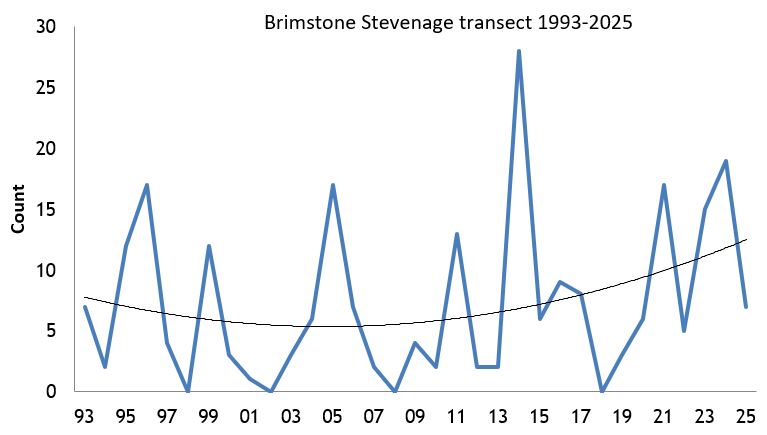
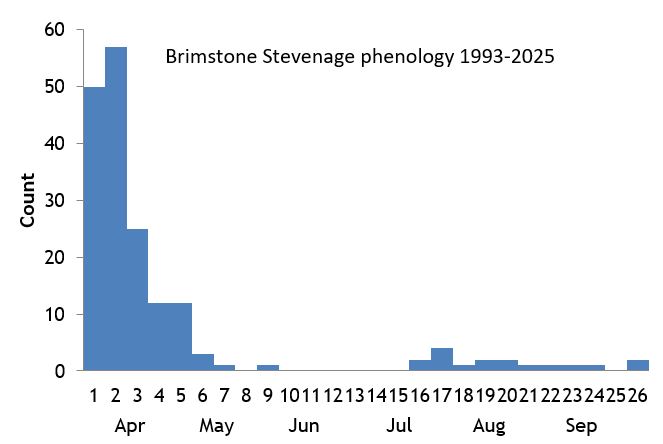
Knebworth Park transect 1996-2010 and 2017-2025
Similar variations in numbers are apparent as for the Stevenage transect but the status here is stable. In 2017, 13 were recorded which is slightly above the average of about nine in the 1996-2010 period. Most in 2017 were seen in the north-western part of the park. In 2019, 5 specimens were seen on 29 March, before the start of the transect season. On 9 August 2023 7 individuals were seen, 6 of which were together at Burleigh Bottom.

Knebworth Woods transect 2017-2025
Norton Green Common and other open areas in the woodland are the best places to find the butterfly. In 2021, 4 specimens were counted on 29 March.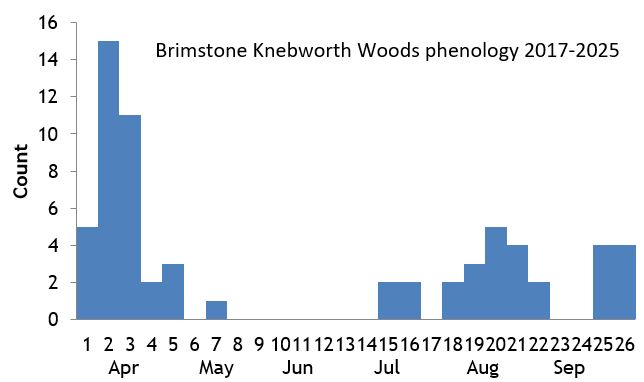
Pryor's Wood transect 2000-2022
The butterfly is sometimes seen here, mostly in the spring; the best count was on 2 May 2008 when three specimens were recorded.Life History
Earliest date: 27 January 2022 at Watery Grove
Latest date: 14 December 2016 at Burleigh Meadow
This species can be seen in every month of the year as it overwinters as an adult. It is most active in the spring when peak numbers usually
occur in April. The hibernating individuals may even be flying in early July when the emergence of the new generation begins. The eggs are usually laid
singly under a buckthorn leaf in early May with caterpillars hatching out by the end of the month. When larvae are fully grown they usually pupate away from
the foodplant. Just before emergence of the adult butterfly, a spot on the forewing can be seen through the pupal case.
Behaviour/Observation notes
As noted above, the Brimstone is more active in the spring when both sexes seek out a mate. Males spend time patrolling hedgerows and woodland edges to search for females which generally emerge from hibernation later than the males. Because of the more frenetic activity of the butterflies at this time they are more difficult to approach. However, after mating has occurred, males spend more time feeding and females egg-laying, facilitating an easier approach for close-up photographs.
Variations/Aberrations
There are a large number of aberrations mostly to do with the wing colour and the
central spots but are very rare.
Find out more on the UK Butterflies website
References
Bell, P. (1973). Macrolepidoptera in 1972, Transactions of the Hertfordshire Natural History Society, Vol 27 pp. 229-231
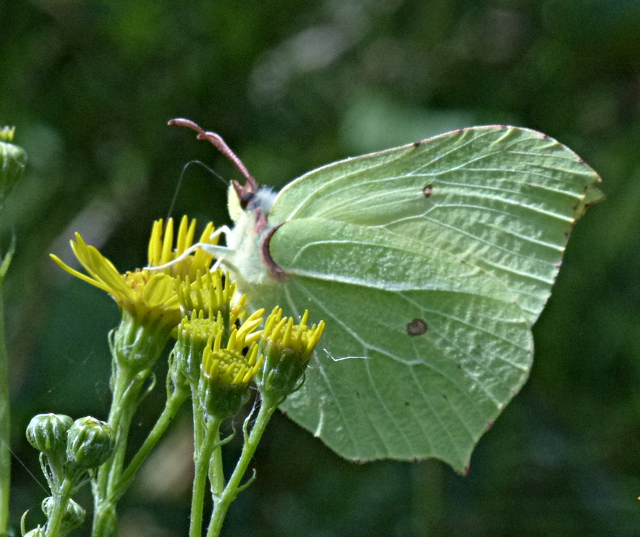
Norton Green Common 14 Aug 2017 (m)

Bareleigh 6 Apr 2017 (f)
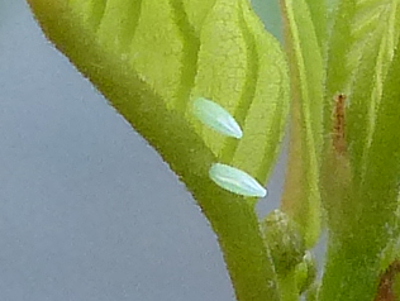
Eggs Stevenage garden 5 May 2016
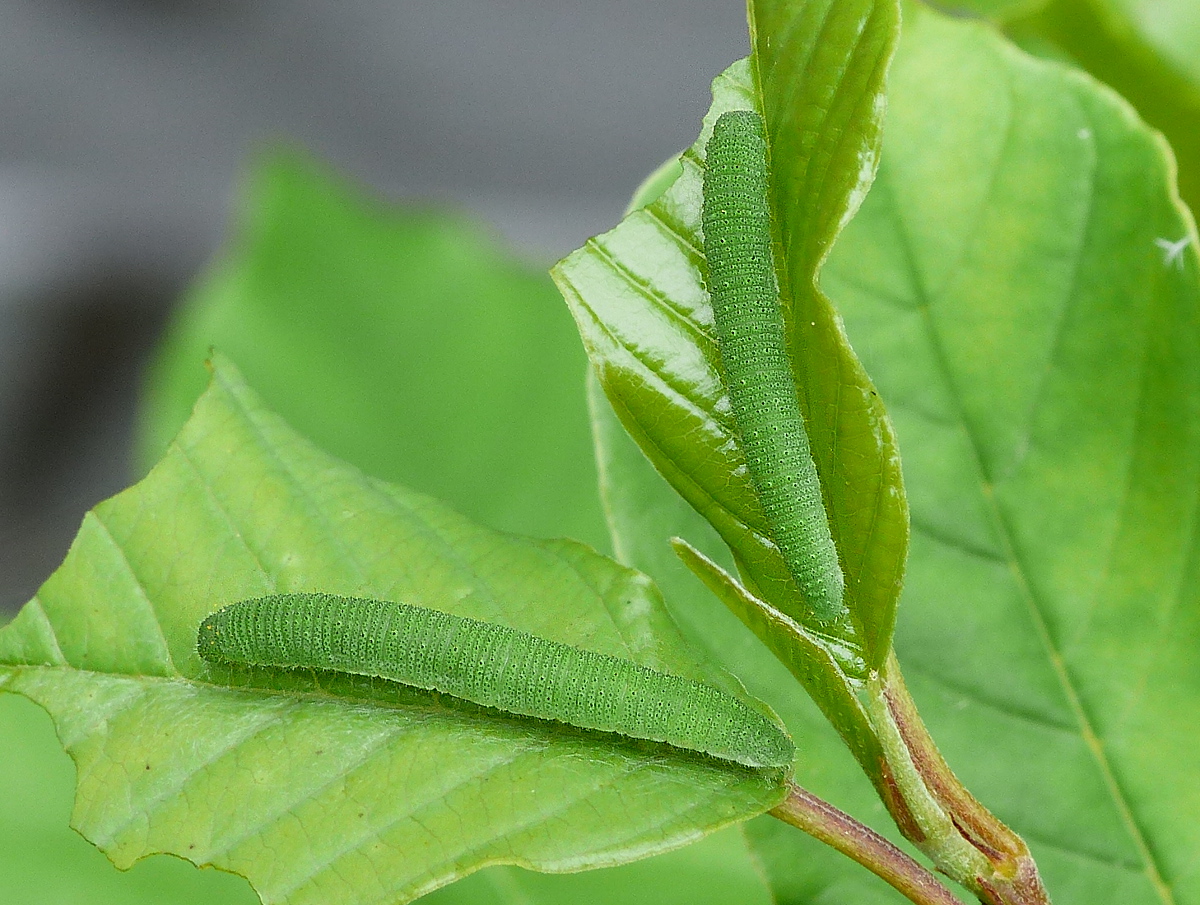
Larvae Stevenage garden 4 Jun 2016
